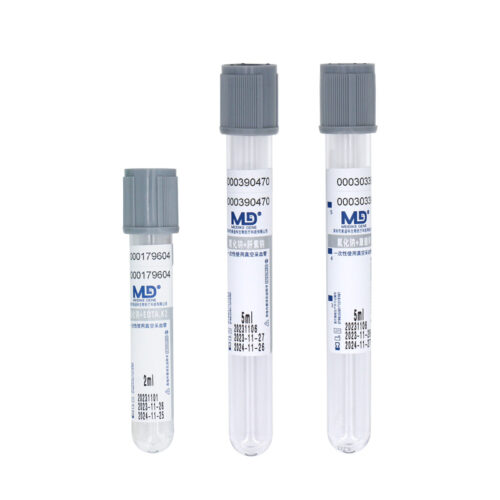O teste de glicose é uma ferramenta de diagnóstico crucial usada para monitorar e gerenciar várias condições médicas, como diabetes, hipoglicemia, e distúrbios metabólicos. A medição precisa da glicose depende fortemente de técnicas adequadas de coleta de sangue, incluindo a seleção do tubo de coleta de sangue de glicose apropriado. Com diversas opções disponíveis no mercado, it is essential to understand the factors to consider when choosing the right glucose blood collection tube.

Tube Additives and Anticoagulants
Different glucose blood collection tubes contain specific additives and anticoagulants, which can influence the accuracy and stability of glucose measurements. Common additives include sodium fluoride, potassium oxalate, and EDTA (ethylene diamine tetraacetic acid). Sodium fluoride and potassium oxalate inhibit glycolysis, preserving glucose levels in the collected blood sample. EDTA is used to prevent clotting. Consider the specific analytical requirements and testing protocols to select the appropriate tube type.
Glucose Stability
The stability of glucose in the blood sample is a critical factor when selecting a blood collection tube. Tubes with glycolysis inhibitors, such as sodium fluoride, offer better stability by minimizing the breakdown of glucose. This is particularly important when there is a delay between sample collection and analysis. Evaluate the expected time frame between collection and testing to ensure the chosen tube can preserve glucose levels accurately.
Sample Volume
Different glucose blood collection tubes come in varying sizes, allowing for different sample volumes. Consider the required sample volume for your specific testing needs. Using a tube with a larger or smaller volume capacity than necessary may affect the accuracy of glucose measurements. Always adhere to the recommended sample volume indicated by the manufacturer and the testing facility.
Compatibility with Testing Method
The selection of the glucose blood collection tube should align with the testing method employed in the laboratory or healthcare setting. Different testing methods, such as enzymatic or hexokinase methods, may require specific tube types for optimal results. Consult the laboratory guidelines or manufacturer’s recommendations for compatibility between the tube and the testing method.
Storage and Transportation
Consider the storage and transportation requirements when choosing the right glucose blood collection tube. Some tubes may require refrigeration or specific temperature conditions to maintain sample integrity during transit and storage. Ensure that the chosen tube can withstand the intended storage and transportation conditions.

















